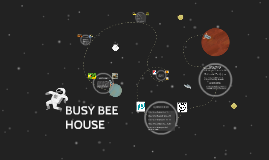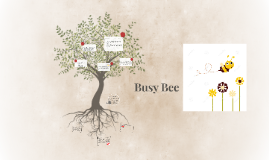Bee Busy
Transcript: Exampels of Writing Prompts When I realized I needed to make the interactive bulletin board into a lesson, I thought about how the writing prompts could still be used for students to practice their writing. There are 51 writing prompts that I created for this specific bulletin board and there are many more that I could create. Some writing prompts are opinion related, some are letters to certain people or characters, and some prompts ask the students to create a story. With the diversity of writing prompts, I was thinking of doing a lesson between the differences of narrative, argumentative, and informative writing. The Lesson cont. Bee Busy Writing Prompts Bee Busy Orignially, I created this bulletin board for my fourth grade students to interact with in the classroom as a side activity for when they had completed their other classwork. My students don't often write for enjoyment and I wanted to offer them a bulletin board of writing prompts for them to choose from. With this bulletin board, my students can choose a prompt that they find interesting, practice constructing a piece of writing that they would be proud of to turn back in, and then have the opportunity for their work to hang on the bulletin board for other students to read. Write a story about a family trip. Convince your teacher why you shouldn't have homework. Best food ever? Write a letter to the president. Write a scary story. Write about your own secret tree house hideaway. Rewrite a fairy tale. Give it a new ending. Write a funny story. The Lesson The good thing about the board is that the prompts are held on with velcro. If the teacher wanted there to only be one type of writing prompt, narrative for example, then she could leave the narrative prompts on the board and take off any argumentative and informative ones. After my students have learned the differences between narrative, argumentative, and informative writing, I will explain the bulletin board. The bulletin board has a variety of writing prompts. There are multiple narrative, argumentative, and informative writing prompts. Students will know how to determine which is which and can use the prompts to practice writing the different types of writing. The Lesson cont. I would teach the differences between narrative, argumentative, and informative writing. Narrative writing tells a story. It tells about an event, adventure, or experience. Narrative writing answers the questions: who, what, where, when, and why. Argumentative/Opinion writing takes a position on a topic and then defends the position using evidence. I would introduce the OREO method to my students which stands for O-Opinion, R-Reason, E-Examples, and O-Opinion. Informative/Explanatory writing gives information about a topic by using facts to back the information up.

















